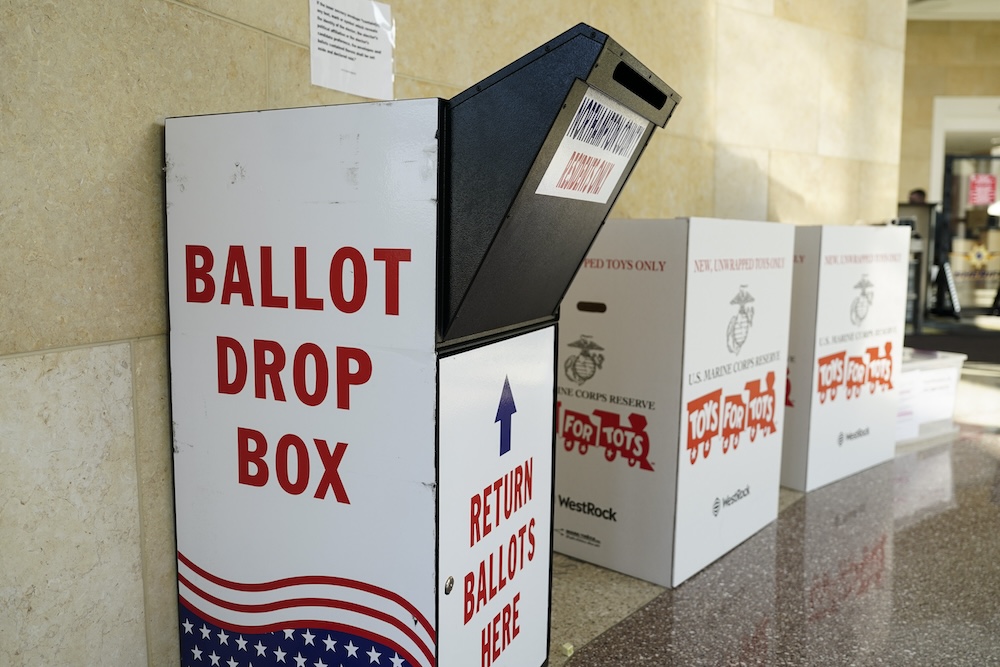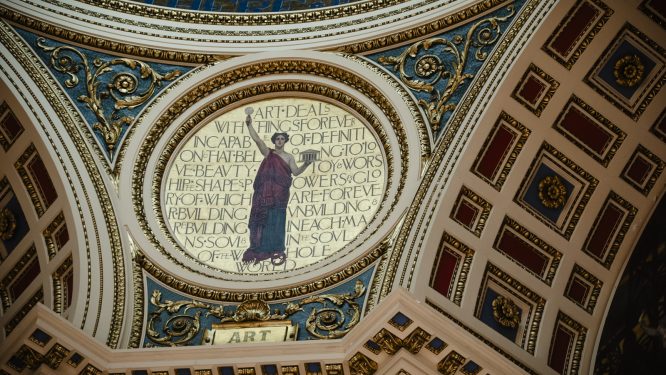by Katie Meyer of Spotlight PA
Photo courtesy of Matt Smith / For Spotlight PA
On Pennsylvania’s April 23 primary ballot are races for president, U.S. House and Senate, attorney general, auditor general, treasurer, and more.
Spotlight PA is an independent, nonpartisan, and nonprofit newsroom producing investigative and public-service journalism that holds power to account and drives positive change in Pennsylvania. Sign up for our free newsletters.
Election experts in Pennsylvania expect largely smooth sailing at the polls this week, anticipating the unofficial results for most races on the April 23 ballot will be available on election night.
Pennsylvania has been holding elections using no-excuse mail voting since 2019, and the state has steadily moved from persistent delays in reporting results to relatively quick turnarounds. This has been accomplished mostly thanks to workers’ increasing familiarity with the mail process and state grants allowing counties to upgrade their equipment.
“I would expect almost all counties to be able to report an overwhelming number of those ballots on election night,” said Jeff Greenburg, a former Mercer County election director who now works for the good-government group Committee of Seventy. He added that “there could be a few that stretch into Wednesday.”
On the ballot are candidates for president and U.S. Senate, though those races are essentially decided on both sides of the aisle. More lively are the races for Pennsylvania’s three-row offices: both the Democratic and Republican attorney general primaries have multiple candidates, and there are competitive Democratic primaries for treasurer and auditor general.
The state House and Senate are also full of races to watch.
Final outcomes for most of the races in both chambers will be decided in the primary, thanks in part to legislative maps that have created a relatively small number of truly swingable districts. Races to watch include those of state House Minority Leader Bryan Cutler, who is being challenged from the right for his Lancaster County district, and Democratic state Rep. Amen Brown, who faces two challengers to his left in a West Philly district that has in recent years seen repeated turnover in its representation.
As of Friday morning, the Pennsylvania Department of State had approved nearly 896,000 applications for mail ballots; it approved 1.82 million during the presidential primary in 2020. That year, just under 80% of voters returned those mail ballots, according to the department.
Voters who have already filled out and returned their mail ballots may have noticed several changes from previous years. The department put these in place to cut down on common ballot errors like failing to sign or date them, misdating them, or forgetting to use an interior secrecy envelope, according to Secretary of the Commonwealth Al Schmidt.
“Since the 2020 election cycle, thousands of mail ballots have not been able to be counted because of errors that voters made while completing their mail ballots,” Schmidt said in one of several recent daily updates on election preparations.
The redesigned ballots include an instruction sheet that has graphics. The interior secrecy envelope is now yellow, which Schmidt says is intended to distinguish it more clearly from the outer envelope. The outer envelope also has a colored stripe to help the Postal Service identify election mail, and it includes a revised section for dating and signing the ballot that highlights where these elements must go.
The redesign also is, in part, an acknowledgment of the state laws and court rulings currently dictating Pennsylvania’s mail voting rules.
The handling of undated and misdated ballots, in particular, is still under active litigation. The most recent decision on the subject saw a three-judge panel of the 3rd U.S. Circuit Court of Appeals ruled that ballots must be properly dated. If a voter fails to date an outer ballot envelope or writes a clearly incorrect date, such as their birthday, counties must reject the ballot.
Voting rights groups are appealing the ruling on the grounds that a missing or incorrect date is an immaterial error and that rejecting these ballots disenfranchises eligible voters. However, the status quo will not change before the primary election.
There also remain several areas of state law in which there is no consistent statewide rule. Counties can decide whether to offer remote drop boxes for mail ballot returns. And they can decide whether to offer ballot curing, in which election officials notify voters of mail ballot mistakes before Election Day.
In an email to Spotlight PA, a Pennsylvania Department of State spokesperson said that it encourages counties to allow curing “so that [voters] are not needlessly disenfranchised.”
Over the past several years, county election officials have pushed for changes in state law they say would allow them to process mail ballots more quickly and easily — in particular, they want pre-canvassing. At the moment, election workers can only start processing mail ballots at 7 a.m. on Election Day. Allowing this to begin ahead of Election Day is a common practice among states with widespread mail voting.
The legislature has failed to OK this change, frustrating voting rights advocates like Greenburg. He told Spotlight PA, “Even a few days of pre-processing — if authorized by the General Assembly — would eliminate this question and uncertainty [about the timing of results] altogether.”
“It remains ridiculous that this simple election administration improvement hasn’t been enacted,” he said.
Counties have been able to make other updates to their processes thanks in large part to state grants the legislature authorized in 2022. The law creating the grants also required counties to tabulate ballots continuously through the night to get their counts done more quickly and also allowed them to purchase new tech that speeds up the process.
One piece of technology counties are increasingly adopting is the electronic pollbook.
Some voters may see these pollbooks for the first time this primary. From a voter perspective, the update is relatively minor. E-pollbooks are tablets that replace the paper pollbooks voters have traditionally used to sign in voters.
They can make the sign-in process quicker, but the biggest differences that come with their use happen behind the scenes.
In particular, e-pollbooks dramatically speed up the process of pollbook reconciliation, which involves election workers scanning every voter’s name into the commonwealth’s Statewide Uniform Registry of Electors — or SURE — system, to verify that nobody voted more than once. With paper pollbooks, that involves individually scanning a barcode beside every voter’s name. With electronic ones, it happens at the touch of a button.
As of the November 2023 municipal election, 25 of the commonwealth’s 67 counties were using electronic pollbooks — up from 19 in last year’s May primary.
BEFORE YOU GO… If you learned something from this article, pay it forward and contribute to Spotlight PA at spotlightpa.org/donate. Spotlight PA is funded by foundations and readers like you who are committed to accountability journalism that gets results.




